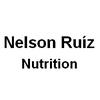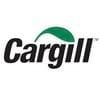Growth of the modern broiler is very adaptable to a vast range of diet nutrient densities, and so formulation matrices are greatly impacted by prevailing economic situations. The broiler still eats quite precisely to its energy needs and alters its feed intake in response to variable diet energy level. For example, 25-35d broilers can be fed diets a low as 2850 kcal/kg or as high as 3500 kcal/kg as seen in some locations, and growth rate is little impacted if the bird can adjust its feed intake. Since feed intake is predictably influenced by diet energy level, all other nutrients and especially the EAAs, are adjusted to “normalise” their daily intake. We usually refer to this overall mathematical manipulation of individually nutrient concentrations as establishing “nutrient density”. Today extremes of nutrient density are seen in different geographical locations and so classical F:G is quite variable, driven by variable feed intake. Following are general nutrient densities chosen to provide variable F:G (and vice versa).
Nutrient density for a variable Feed:Gain of from 1.35 to 1.65 for a 2.5 kg broiler (ME, kcal/kg, DLys,%)
As nutrient density decreases so obviously feed cost/tone will decrease. If birds can truly eat free choice to meet their energy requirements, then all the above options should result in comparable growth rate. Target F:G therefore depends on economic considerations or marketing options for those selling feed to independent broiler growers. Unfortunately, feed intake is rarely “free-choice” after 25-28d of age in commercial farms where our stocking densities are invariably pushed to the limit of climate control. For this reason, most integrators trend towards higher nutrient density. Complicating this choice of nutrient density are a range of on-farm conditions that can affect feed intake. The main factors are pellet quality, environmental temperature, lighting program, stocking density and health status of birds. The general effects of these variables are as follows:
Effect of on-farm variables impacting broiler performance and so choice of nutrient density.
Although these variables shown above are detailed in isolation, it`s obvious that they are interrelated. Failure to account for the 5-way interaction of the above variables is likely the main reason for limited accuracy of models that attempt to predict broiler performance.
The reason for using pelleted diets is to reduce maintenance energy cost associated with feeding activity and so improve F:G. The classic work of Leo Jensen at the University of Georgia showed that improvement in feed efficiency resulting from pelleting feed was not due to “improved” digestibility of heated starch, but rather an 18% reduction in the time spent feeding. Today, pelleted diets are most often used for broilers, although we often underestimate the ability of birds to consume large pellets at younger ages. Obviously the larger the pellet, the less time spent feeding. As we increase pellet size for older broilers there is a dramatic reduction in the number of pellets necessarily consumed, and so the less (net) energy needed for feeding activity. If die size is just 3mm and this pellet is cut short, the 30d broiler must consume an amazing 580 pellets to meet its daily intake of around 180g of feed. On the other hand, using a large 5mm die and cutting the pellet 6mm long, the bird only needs to consume 140 of these larger pellets each day. Apart from obvious differences in the feed mill regarding reduced production cost, the larger pellets mean the bird spends considerably less time occupying feeder space.
Impact of pellet size on number of pellets consumed by a 30d-old broiler
Larger pellets are obviously most advantageous where stocking density is high and/or where feed time is limited due to reduced daylength or heat distress. Another way of looking at the impact of pellet quality is to quantify the energy (net) saving from reduced maintenance feeding activity:
Change in effective diet energy level in response to improved pellet quality
As pellet quality is improved then we have the option of either accepting improved F:G or by capturing the energy saving by corresponding reduction in diet energy level (as detailed above) and expecting no change in F:G.
Environmental temperature is the next major variable impacting feed intake. Optimum temperature for feed efficiency is seen at around 260C. Cooler temperatures will result in increased feed intake as the bird increases its BMR. While F:G deteriorates at cooler temperatures, growth rate is often increased, since there is associated increase in AA intake- the improved growth rate partially offsets the deteriorating F:G due to low temperature, although the overall effect is negative. Once temperature gets below 15oC there is resurgence in potential for onset of ascites, which spills over into the health status category mentioned above. There are obviously upper limits to reduced maintenance energy needs as temperature increases. Once birds start panting there is increased maintenance energy needs` and this poses unique challenges in setting levels of nutrient density. It’s often futile to expect standard performance from panting, heat-stressed broilers, simply through manipulation of nutrient density. More often the solution lies in stimulating nutrient intake through other fam management factors, such as daylength and pellet quality. At daytime temperatures approaching 400C broilers rarely eat from noon-6pm. We can only hope to sustain nutrient intake by using high nutrient-dense diets with good pellet quality- concurrently we must relax dark:light programs to give birds longer to eat feed during the cooler part of the evening/night-time.
Since broilers are reluctant to eat in the dark period, then hours of light are usually positively correlated with feed intake. About 30 years ago we introduced a period of darkness to control metabolic disorders such as Sudden Death Syndrome, Leg disorders and perhaps Ascites. The geneticist largely seems to have resolved most of these issues and so today a period of darkness is more likely dictated by various welfare guidelines. Perhaps more important is the recent research findings that a continuous period of at least 4hr darkness improves the broilers immune responsiveness, to both field challenges and vaccinations. It`s unwise to impose a prolonged period of darkness when there is severe heat distress. Generally, the longer the period of light, the faster the growth rate, but the poorer the feed efficiency- this apparent dichotomy is explained by the fact that with, for example, a photo-schedule of 12Light:12Dark, the bird spends close to 12hr sitting with minimal maintenance needs. Usually, the longer the daylength, the greater the opportunity to use diets with lower nutrient density.
The numbers shown for the effect of stocking density on broiler performance metrics are all shown in red text, meaning a negative correlation. Stocking density is a corporate decision that invariable balances farm output per cycle vs performance values for individual bird performance. Various attempts at “thinning” attempt to bridge the gap re optimum floor space usage, yet it`s invariably associated with overall increased mortality/morbidity and today poses added pressure on biosecurity programmes. With high stocking density there is little choice but to use higher nutrient density.
Health status is the final on-farm variable to be considered, and while it undoubtedly dwarfs some of the other variables described it`s usually the most difficult to quantitate or predict. There will be at least 0.20-0.30 difference in feed efficiency in regions of high disease challenge where broilers are continuously vaccinated on farm, compared to those few lucky isolated regions that have minimal disease challenge and need no, or few hatchery vaccinations. With minimal disease challenge, broilers do predictably well regardless of diet nutrient density and so F:G is tailored to economics of production. With high disease challenge, there are variable approaches to feed formulation- some select high nutrient density since feed intake is compromised while others suggest that because of compromised physiological systems (especially gut structure) then high nutrient dense diets are less economical than are more moderate levels of energy and other nutrients.
Extremes of selected nutrient density are invariably seen in broiler integrators vs those selling feed to independent broiler growers. Integrators often choose high/moderately high density while those selling feed are always conscious of feed cost/kg. The broiler is adaptable to these choices and if feed intake is truly “free choice” it has little effect on growth rate and there is a predictable effect on F:G. Unfortunately, feed intake is usually below true genetic potential because of the farm scenarios discussed previously. One other variable re overall economics is cost of feed transport. In many regions transport cost is higher than actual feed milling cost per tonne. An often-undervalued advantage of high nutrient-dense (and larger pellet size) is increased physical density of feed and so less overall transport costs. If one looks at the extreme situation of low nutrient-dense mash vs high nutrient-dense large pellets, tonnage within the fixed volume of a feed truck varies by 5-10%.



























